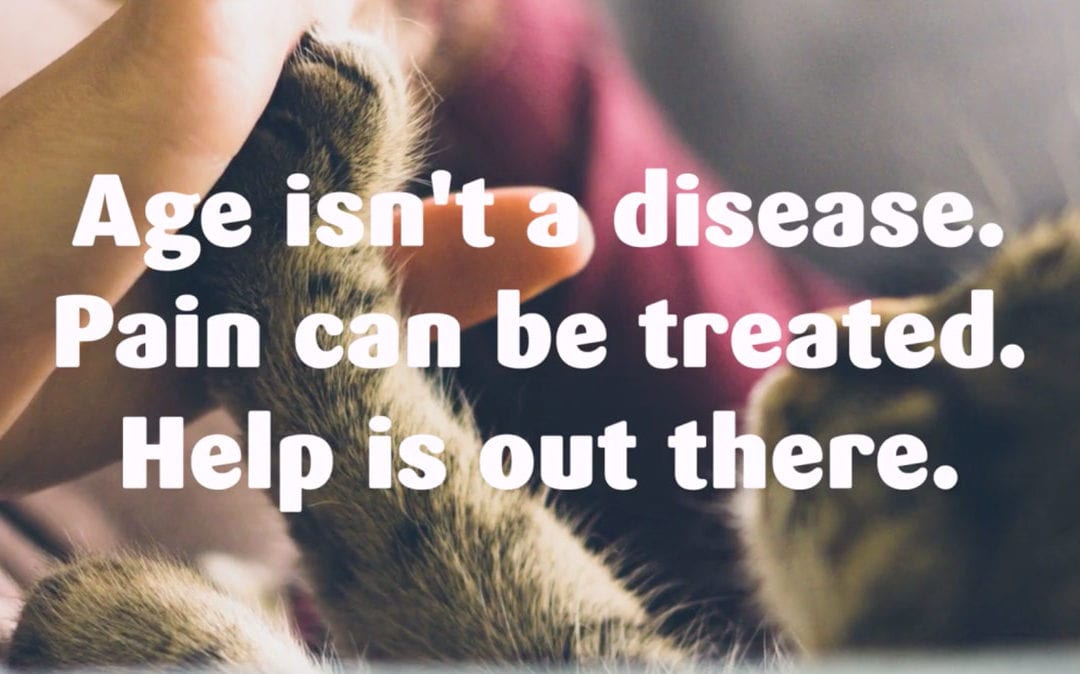Cherie T. Buisson, DVM, CHPV, CPEV Certified Hospice and Palliative Care Veterinarian
Certified Peaceful Euthanasia Veterinarian
Low Stress Handling (TM) Silver Certified
I first met Carolina’s Mom when I made a house call to help her say goodbye to her kitty, Cokie. I learned she worked at a local shelter, and I told her I had spent over two years working for a shelter as well. Cokie was her only pet, and I felt my heart break a little harder than usual when I drove away and left her all alone.
A few weeks later, Susan contacted me saying she had fostered and eventually adopted an elderly cat from her shelter. The little old lady cat was estimated to be 15-18 years old and had been found months ago abandoned in a parking lot. She had terrible skin issues and was crippled with arthritis. She asked if I would come and consult with her for palliative care.
Carolina (pronounced like the state name) was adorable. By the time I met her, the wonderful shelter team had alleviated her skin disease, and although she was thin with a rough coat, she looked so much better than her shelter intake pictures. Her skin hung loosely on her frame – she had obviously once been a much larger cat. She was painful at the slightest touch on her spine, rippling her skin in response to my gentle palpation. She walked with a lumbering gait like a tiny raccoon. During my examination, she batted at toys with her front legs. She was strong, but she was hurting. She wasn’t jumping on furniture or running. Though she wanted to play, she couldn’t do much more than paw at toys. She stole my heart.
We started her on a joint supplement, an anti-inflammatory medication, and a pain medication. She also had a prescription diet for her very early kidney disease. I hoped that she would settle in at her new home and start feeling better. As the days passed, I got email updates along with photos and video from Susan.
“I hope you don’t mind having a hospice patient for 10 years”
“She’s great taking meds and, as you can see, getting very playful (loves wand toys and will chase after them, not just bat at them lying down) and her gait continues to improve (once she gets going at least).”
“This morning when we were playing- because she wants to play all the time -she was pouncing and running from me and wiggling her butt and running back at me… she seems to feel pretty good :)”
“She still limps a little but she is walking so much better! She used the ramp again the other day by jumping up on the top of it from the side.”
“Hi Dr B! I was sitting on the guest bed and all of a sudden she was jumping up here with me! It was awkward but she made it (and this bed is high because it has a pretty thick topper on top of the mattress)!”
Carolina has surpassed all our expectations! She’s been on palliative care for 6 months and has a good quality of life. Her Mom knows to watch for changes in behavior – like jumping less, sleeping more, hiding, and playing less – to let her know it’s time to make adjustments to her treatment plan.
Painful pets are a challenge – not because they are hard to treat, but because they are so stoic. They don’t communicate their pain as obviously as people do. Instead of complaining, they merely change their behaviors to keep themselves as comfortable as possible. Some don’t even stop what they are doing – they just push through the pain. If you are seeing any of these signs, please have your pet evaluated for pain:
“Slowing Down”
Limping
Jumping less or less high
Walking less or less distance
Slow to get up or lie down
Walking stiffly
Difficulty “getting going” in the morning or after a nap
Difficulty with steps or stairs
Difficulty turning
No longer jumping on furniture
Grouchy
Not as fond of being touched or picked up
Twitching skin when touched
Not grooming as much
Grooming extra in certain spots (especially over joints)
Hiding
Sleeping in unusual positions or places
Tense belly
Panting in a cool room
Restlessness (especially at night)
Whining/Crying (this is much less common)
If you would like, please go to our Quality of Life page and fill out the questionnaire. We’d be happy to talk to you about your pet’s results.

